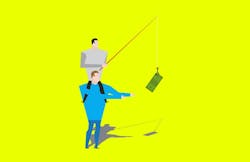When it comes to measuring the quality, aptitude and skill level of a technician, Lois Schulte believes certifications tell the story.
“Because as far as an independent measuring tool, ASE certifications are a pretty good indicator,” she says.
For that reason, achieving and updating ASE certifications are of top importance for Seeburg Service Center and A-1 Custom Car Care, a seven-shop network in Springfield, Mo., for which Schulte serves as general manager. She says her shop has ensured technicians live up to the company’s emphasis on training through its incentives program, which gives technicians the opportunity to earn more pay as they continually improve their skillsets. Here, she details the program that has led to more efficient and productive employees, and has reduced turnover over the years.
We set the ASE certifications as a benchmark for skill level, so we built them into our pay plan. Every time a tech completes another certification, they get a bump in pay.
The target for the first two certifications that a technician gets are brakes and suspension and steering. Once that is completed, the technician gets $1 more per hour.
Then the next two benchmarks are air conditioning and exhaust, as exhaust is a main part of our business. Technicians get an additional $1 per hour if they get those two.
The third level is for electrical engine performance and engine repair; they get an additional $2 per hour.
The last ones are the master technician certification and advanced engine performance specialist (L1) tests for manual and automatic transmissions. In total, it’s about 10 certifications you have to hold.
Our pay plans are incentive-based. Those dollars per hour add to their base pay. They still have an incentive portion of their pay, and once they flex so many hours, they have opportunities for additional amounts.
We also incorporate bonuses into our pay system. In order for them to keep up their bonuses, which is $1 per hour, they need to achieve at least six hours of training per quarter, or 24 hours per year.
Sometimes when we go to trade shows, or we have a training weekend, or I send a tech to a week’s worth of training, they make it to all their training for the year and get it done in one big chunk. It’s not an ideal situation, but it is an option. We prefer they take on opportunities for after-work training.
You can easily track this by putting it into a spreadsheet, which is noted on each technician’s pay statement. The number of hours worked is multiplied by bumps in pay they achieved through training—it’s as simple as that. See the sidebar for an example.
We go over the structure of the program during an orientation. It’s pretty simple. You’ll need to conform the program based on the tech’s skill level upon employment.
Technicians come to us in lots of different forms, so some of them will simply need more time to complete the program. If you’re hired with the certifications, you automatically get the pay raise. But those certifications expire every five years, so then they have to recertify. It usually takes them about 6–12 months to get their statuses back up to date.
If you're talking about a new technician coming on board, it might take them a year or two. I’ve had some of them do it in as little as a year. I’ve had some people receive master technician status in less than a year.
I typically wait 60–90 days before putting them on commission, and during that time I want them to get started on their ASE certifications. The idea is to put them in with experienced technicians, let them get a feel for where they're at skill-wise, and then work on getting some training done. We’ll help them set up whatever training they need. Once they get their first ASE certifications under their belts, then they're ready to go on commission and go on the pay plan. Until then, I just keep them at an hourly rate.

